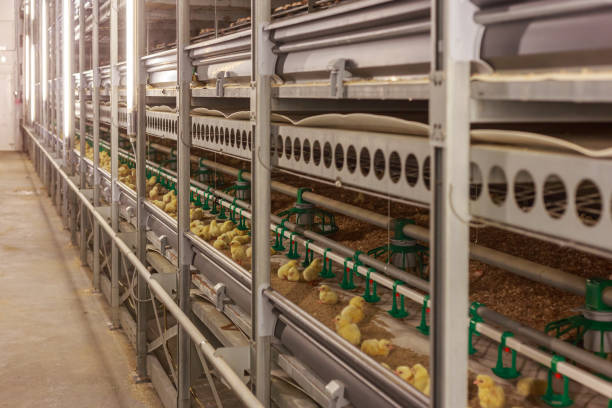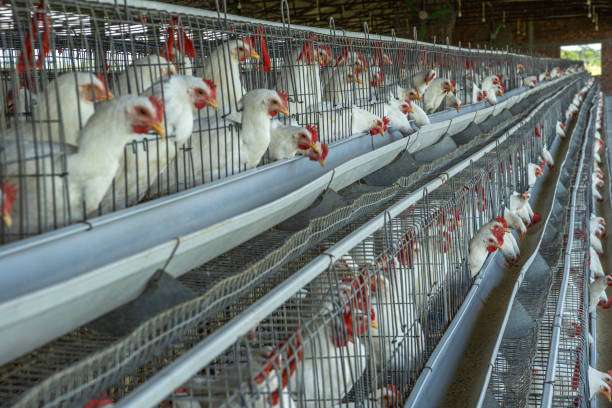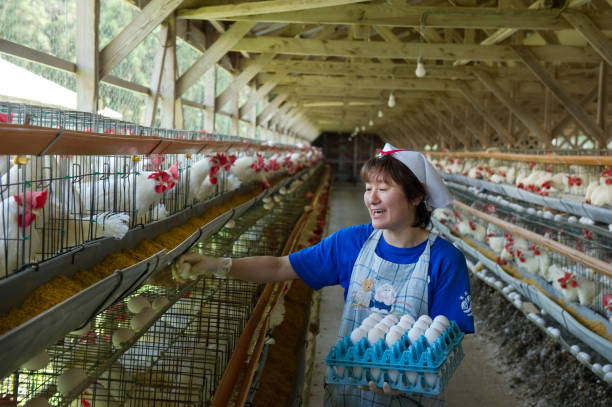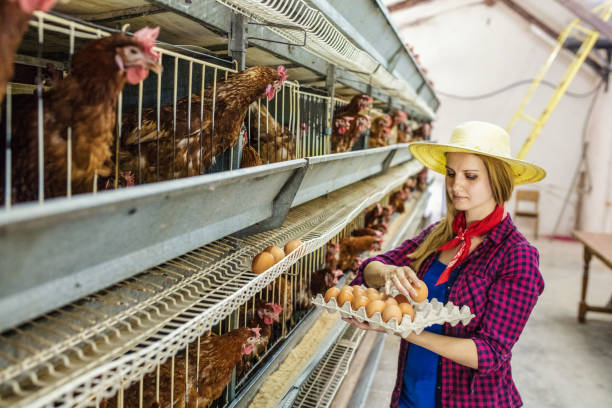Automatic Feeding Layer Cage System for 30,000 Birds
Automatic Feeding Layer Cage System for 30,000 Birds
When you’re running a poultry farm that houses 30,000 laying hens, manual feeding isn’t just time-consuming — it’s nearly impossible to manage consistently and efficiently. That’s where an automatic feeding layer cage system steps in as a game-changer. Designed specifically for large-scale egg production operations, this system takes the headache out of daily feeding tasks, improves feed distribution accuracy, and significantly boosts overall productivity. At Livi Machinery, we’ve helped farmers across Asia, Africa, and South America transition to fully automated solutions that deliver real results. If you’re considering scaling up your operation or simply want to modernize your current setup, this guide will walk you through everything you need to know about a 30,000-bird automatic feeding layer cage system — from components and benefits to design considerations and long-term value.
What Makes a Complete Automatic Feeding System?
At its core, an automatic feeding layer cage system is more than just a conveyor belt moving feed through rows of cages — it’s an integrated solution designed to support bird health, optimize labor use, and reduce waste. For a 30,000-bird facility, the system typically includes several key components: a central silo or feed storage unit, auger systems or chain conveyors for transporting feed, feed troughs along each tier of cages, and an automated control panel that manages timing and dosage. The layout usually follows either a longitudinal (feed lines run parallel to cage rows) or transverse (perpendicular feed delivery) configuration, depending on shed length and cage arrangement.
One of the most important aspects is uniformity. Every hen must receive the same amount of feed at the same time, which eliminates competition and stress among birds. Our systems use precision metering boxes that dispense feed evenly across all levels — even in multi-tier A-frame or battery cage setups up to four tiers high. These are especially crucial in high-density farms where consistency directly impacts egg production rates. Additionally, our feed lines are made from galvanized steel or food-grade plastic to prevent corrosion and ensure hygiene over years of operation.
We also integrate features like anti-waste grills on feed troughs to minimize spillage — a small detail that can save thousands of kilograms of feed annually. Some advanced configurations even include weight sensors or AI-driven monitoring tools that alert farm managers when feed flow is blocked or if consumption drops unexpectedly — often an early sign of disease or environmental stress.
Benefits You Can’t Ignore
Switching to full automation isn’t just about convenience; it’s a strategic investment with measurable returns. First and foremost, labor costs drop dramatically. Instead of needing six or eight workers to handle feeding twice a day, one person can oversee the entire process with automated scheduling. For a 30,000-bird house, this could mean saving over $10,000 per year in wages alone — not counting reduced errors and overtime.
Feed efficiency is another major win. Manual feeding often leads to overfeeding in some areas and underfeeding in others. With automation, you control exact portions down to the gram. Our clients report feed savings between 8% and 12% after switching — which translates into tens of thousands of dollars saved annually, given current feed prices. Less waste also means drier litter, lower ammonia levels, and better air quality, all contributing to healthier flocks and fewer respiratory issues.
Then there’s consistency in egg production. Hens thrive on routine. When they’re fed at the same time every day, with consistent access to nutrients, their laying cycles stabilize. Farmers using our automatic systems often see a 5–7% increase in peak lay performance and longer productive lifespans for their flocks. Plus, because the feed runs on a timer, you can program feeds during cooler parts of the day — say, early morning or late evening — which encourages better consumption during hot weather.
Don’t forget scalability. Once the infrastructure is in place — silos, controls, power supply — expanding to a second or third house becomes much simpler. Our modular designs allow seamless integration across multiple sheds, all managed from a single interface. Whether you’re starting with 30,000 birds now or planning to grow to 100,000, the system grows with you.
Design Considerations for Large-Scale Farms

Setting up a feeding system for 30,000 birds isn’t something you wing — proper planning is critical. Start by analyzing your shed layout. Is it wide or narrow? Long or short? Are the cages arranged in double rows, triple, or four-tier configurations? Your cage style directly affects how feed lines are routed and powered. We recommend keeping cage rows no longer than 120 meters to avoid strain on drive motors and ensure smooth feed flow throughout.
Next, consider feed storage capacity. A flock of 30,000 laying hens consumes roughly 2.7 to 3 tons of feed per day (assuming 90–100 grams per bird). To avoid frequent refilling, we typically suggest installing two 15-ton silos — enough for five days of backup supply. This is especially useful during rainy seasons or transportation delays. Silos should be placed near the control room with easy loader access and connected via auger pipes to the main distribution line.
Power supply and backup systems also matter. While most of our units run on 220V industrial power, we always recommend including a manual override option or diesel generator hookup in case of outage. No farmer wants their birds going unfed for hours because of a storm-induced blackout. Our control panels come with memory retention so settings aren’t lost during downtime.
Lastly, think about maintenance access. Even the best-engineered systems need periodic cleaning and inspection. Make sure there’s enough clearance around drive units, tensioners, and corner bends. Using quick-release clamps and anti-jam turning wheels reduces repair time and keeps the system running smoothly year-round.
Why Thousands Trust Livi Machinery
Since 2012, Livi has been at the forefront of smart, durable poultry equipment manufacturing right here in Zhengzhou, China. We don’t just sell cages and feeders — we deliver turnkey solutions tailored to your climate, flock size, and budget. From initial site assessment and 3D design plans to installation training and after-sales support, we stay with you every step of the way.
Our automatic feeding systems have been installed in over 40 countries, from Nigeria to Indonesia to Paraguay. Each system is custom-built based on local conditions — whether it’s adapting for high humidity zones or reinforcing structures for dusty environments. And because we manufacture everything in-house, we guarantee quality control at every stage.

But beyond hardware, what really sets us apart is service. Before you invest a dime, we’ll help calculate ROI, compare financing options, and connect you with existing customers in your region who’ve gone through the same journey. Transparency matters — no hidden fees, no surprise upgrades, just honest advice and reliable machinery built to last.
Thinking about upgrading your farm with a fully automatic feeding system for 30,000 layers? Let’s talk. Drop us a message with your current setup, daily feed volume, and shed dimensions, and we’ll send you a free customized proposal within 24 hours. Don’t miss the chance to transform your operation from labor-intensive to high-efficiency. Contact us today — your smarter farm starts now.
Frequently Asked Questions
How much does an automatic feeding system for 30,000 birds cost?
Pricing varies based on configuration, cage type, and level of automation, but most complete turnkey systems range between $45,000 and $65,000 USD. We offer flexible payment terms and can break down itemized quotes upon request.
Can the system work with different types of feed?
Yes, our feeding lines are compatible with mash, pellet, and crumble forms. Just make sure the particle size matches the metering box specifications to avoid clogging.
Is installation included in the price?
Installation support is available and highly recommended. We provide detailed manuals and videos, but for international clients, we can dispatch technicians for onsite setup and staff training — usually at an additional but reasonable fee.
How often does the system require maintenance?
Basic cleaning and inspection every 2–3 weeks is ideal. Motors and chains may need lubrication monthly, while full checks should happen quarterly. With proper care, these systems last 10+ years without major repairs.
Can I monitor the system remotely?
Yes, optional smart controllers allow remote monitoring via smartphone or tablet. You can view feed times, check for blockages, and receive alerts if anomalies occur — perfect for managing multiple farms.
Do you offer spare parts and after-service?

Absolutely. We keep all common spare parts in stock — chains, motors, sensors, trays — and ship globally within 7 days. Our team offers lifetime technical support via WhatsApp, email, or video call.
Will this system fit my existing cages?
In many cases, yes. Our feeding systems can be retrofitted onto various cage brands and models. Just share photos and measurements, and we’ll confirm compatibility.
How long does it take to get the system delivered?
Typical production time is 30–40 days after order confirmation. Shipping depends on destination — sea freight usually takes 20–40 days depending on port location.
Can I start with one house and expand later?
Definitely. Our systems are modular by design. Starting with 30,000 birds? Great. Adding another house next year? We’ll make sure everything connects seamlessly.
Is training provided for operating the system?
Yes. All buyers receive user manuals, video guides, and live demos. For overseas clients, we offer virtual training sessions or on-site coaching to ensure your team feels confident running the system independently.





